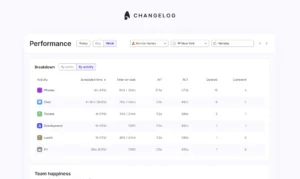
What remote means for CX teams

One of the biggest drivers of the news cycle for the last 18 months has been on the future of the office and effectiveness of work from home. Much of this has been focused on sectors such as banking, law, and technology. Reporters rightly had a frenzy when Jamie Dimon, the CEO of JP Morgan, said working from home “doesn’t work for those who want to hustle”.
Despite the customer service industry employing over 1 million people in the UK with the global industry worth almost $500 billion annually, there hasn’t been enough data or attention on what the transition to remote has meant for this industry that touches everyone.
Over the past month at Surfboard, we’ve conducted research on how the pandemic has shifted attitudes surrounding work from home and the future of the office in the customer service industry. We surveyed a set of companies that collectively employ over 4,000 customer service agents, serving over 27 million customers.
The results of the unplanned experiment in remote working for customer service were mixed and surprising in a number of ways.
More productive but less happy
As of June 2021 when the survey was closed, 70% of respondents had a hybrid model while 30% were fully remote.
Somewhat surprisingly, service KPIs including number of tickets, customer satisfaction (CSAT) and first contact resolution (FCR) showed improvements for the majority of respondents since the start of the pandemic. So clearly remote work is possible for customer service teams and may even have some advantages in terms of productivity.
However, the negative impacts on team morale were also pronounced. Thirty nine percent of employers saw an increase in hours worked – and while this made for more seamless handovers and agents more likely to close cases before the end of the day, it meant more agents felt fatigued or burned out. Agents we spoke to suffered from less clear boundaries between work and personal life, a similar phenomenon experienced in most other industries.
Two thirds of respondents said their team spent less time in meetings, training and doing non-inbound service tasks, meaning their jobs likely became more monotonous and less stimulating. Customer service jobs can be rich and rewarding, but when extra-curricular, learning or social benefits are removed, they can feel more like a grind.
One manager surveyed summed it up well:
“More formalised training is needed when people are working at home – we can’t rely on desk side updates”
Others felt that the social element of the job kept agents engaged and had been impossible to replicate remotely:
“It’s super hard to keep [people] motivated if you can’t blow off some steam with your colleagues”
Planning for a more flexible future
An overwhelming majority (77%) of surveyed employers plan on managing a hybrid team going forward, with only 15% wanting a fully in office team.
Remote work in customer service was rarely considered an option prior to the pandemic but the sustained productivity levels mean employers will find it hard to argue against integrating at least some element of hybrid working. They will need to do this in a way which keeps their teams organised, engaged, learning and able to work on a variety of tasks. We think it’s also important they avoid zero hour contracts and one-way flexibility, where workers are expected to be available and productive on demand without any certainty over their hours or pay.
In short, planning customer service teams with the combination of remote and hybrid models is going to become much more complicated and much more important. Being able to staff appropriately for peaks in inflow while also enabling team members to balance other commitments such as childcare and education, and develop in their careers, is a win-win for everyone.
At Surfboard, we build schedules to facilitate variance in the role of an agent and instill the values of trust, fulfilment and balance into our product. A reduction in meeting and training time might mean time for more tickets, but in the long term not only results in a workforce less equipped to handle different levels of complexity and provide quality service. It can also demotivate the team and is a key trigger for employees leaving, being less productive or providing worse service. This can trigger a vicious cycle which ultimately leads to a lower service levels, increased costs and lost revenue through higher customer churn.
We’re excited to facilitate this transition by providing software that forecasts contacts by channel a customer service team can expect to get, and utilise this data to create fair and transparent schedules. Using accurate forecasting, Surfboard can support teams in identifying how many people are required at peaks and where it can flex up and down. Remote working, combined with Surfboard’s technology, can provide exciting new ways to delight customers with great service, while increasing flexibility for customer service teams.



